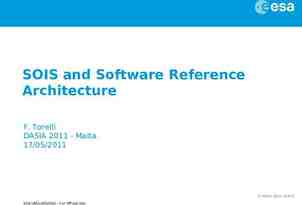SUR 111 Cholecystectomy
28 Slides1.36 MB
SUR 111 Cholecystectomy
Anatomy of the Biliary System
Cholecystectomy with/without Cholangiography Complete Surgical Removal of Gallbladder Performed to Prevent or Treat Inflammation or Obstruction
Biliary Tract Gallbladder, cystic duct, common bile duct, and common hepatic duct Function: transport bile, store bile and release bile into the duodenum Aids in digestion and absorption of fats Gallbladder divided into fundus, body and Hartman’s pouch Hartman’s pouch: most common site of gallstones (clog and prevent passage of bile into cystic duct) Sphincter of Oddi: where CBD empties into duodenum/controls release of bile into duodenum Ampulla or papilla of Vater is an enlarged area of the common bile duct where it merges with the pancreatic duct and empties into the duodenum
Surgery of the Biliary System, Liver, Pancreas, and Spleen, continued Locations of the liver, gallbladder, and pancreas (Modified from Herlihy B and Maebius NK: The human body in health and illness, ed 2, Philadelphia, 2003, Saunders.) Fuller
Gallbladder Pathology Cholecystitis – Inflammation of the gallbladder – Acute or chronic Cholelithiasis – Presence of gallstones Gallbladder calcification Tumor (benign or malignant)
Gallbladder Dissection This is what the gallbladder looks like when it gets to path. http://www.youtube.com/watch?v 6qyY9N LfZYo&feature related
Gall Stones Types: – Cholesterol gallstones Cholesterol gallstones are made primarily of cholesterol. They are the most common type of gallstone, comprising 80% of gallstones in individuals from Europe and the Americas. Cholesterol is one of the substances that liver cells secrete into bile.
Types cont. Pigment gallstones Pigment gallstones are the second most common type of gallstone. – There are two types of pigment gallstones 1) black pigment gallstones, and 2) brown pigment gallstones. Black pigment gallstones: too much bilirubin in bile Brown pigment gallstones: If there is reduced contraction of the gallbladder or obstruction to the flow of bile through the ducts, bacteria may ascend from the duodenum into the bile ducts and gallbladder. The bacteria alter the bilirubin in the ducts and gallbladder, and the altered bilirubin then combines with calcium to form pigment.
Bilirubin - a yellow pigment that is excreted in the bile – It is responsible for the yellow colour of bruises and the yellow discolouration in jaundice.
Gallstones Video http://www.youtube.com/watch?v H6zOB KjVRag
Medications Contrast Media (Hypaque) Dye Antibiotic Irrigation Topical Hemostatics Local
Anesthesia General MAC (IV Sedation) MAC (IV Sedation with Local) Spinal Epidural Local
Instrumentation Minor tray Major Tray Intestinal Tray Gallbladder Tray Laparoscopic Tray Laparoscopic Accessories Extra Long Instrument Tray Scopes
Equipment X-Ray Table Laparotomy Endoscopic Tower (video monitor, insufflation tubing, insufflator, light cord, light source, camera box, camera, scope, scope warmer)
Supplies Laparotomy Pack Basic Pack Laparotomy Sheet Universal Sheet Minor Basin Set Suture of Surgeon choice Kittners Gloves Blades Cholangiogram Supplies (Sterile specimen cup, stopcock, IV tubing, 30cc syringes x 2)
Incision Open Cholecystectomy Right Subcostal – gallbladder, biliary system
Port Sites Laparoscopic Cholecystectomy
Operative Sequence Discussion
Laparoscopic Cholecystectomy with Cholangiography, continued The gallbladder is retracted, allowing dissection of the cystic duct and artery (Colorized from Moody FG: Atlas of ambulatory surgery, St Louis, 1999, Mosby.)
Laparoscopic Cholecystectomy with Cholangiography, continued The cystic artery and duct are clipped and cut (Colorized from Moody FG: Atlas of ambulatory surgery, St Louis, 1999, Mosby.)
Lap Chole Video The Good Excellent: http://www.youtube.com/watch?v Pr3Md9 XlLvw Excellent: Harmonic technology http://www.youtube.com/watch?v 7tTGfY CqH5w
The bad Laparoscopic perforated cholecystectomy (abscess) (nasty) http://www.youtube.com/watch?v G0w9YSmFang This case: a 74 year old man on anticoagulation for atrial fibrillation, presents with acute cholecystitis and sepsis; after a brief improvement with initial conservative management with rehydration, antibiotics and cardiology review for reversal of Warfarin, 48 hours later he deteriorates rapidly and is taken to surgery for cholecystectomy. At laparoscopy a large inflammatory mass is found in the right upper quadrant; gentle blunt dissection frees the omentum and colon from the liver and diaphragm and reveals a large perforated gallbladder.
Laparoscopic Cholecystectomy with Cholangiography, continued Extraction of a cystic duct stone using a balloon catheter (Colorized from Moody FG: Atlas of ambulatory surgery, St Louis, 1999, Mosby.)
Cholecystectomy (Open) Cystic duct is tied close to the gallbladder with a 2-0 silk (From Economou SG and Economou TS: Atlas of surgical technique, ed 2, Philadelphia, 1996, Saunders.)
Operative Cholangiography The catheter is inserted into the cystic duct and advanced into the common bile duct (From Economou SG and Economou TS: Atlas of surgical technique, ed 2, Philadelphia, 1996, Saunders.)
Operative Cholangiography, continued Insertion of the T-tube into the common duct (From Economou SG and Economou TS: Atlas of surgical technique, ed 2, Philadelphia, 1996, Saunders.)

































